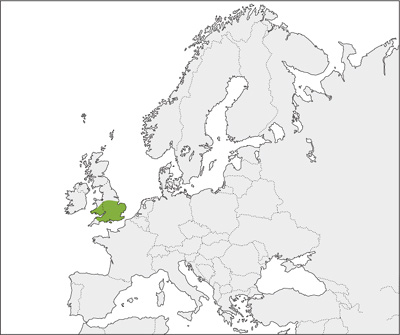
Muntiacus reevesi
Reeve’s Muntjac is a relatively small and compact species, introduced to some European countries from Southeast Asia. The deer vocalize quite loudly and for this reason are also known as Barking Deer.
Muntjac are light brown on the back and sides and light coloured on the inside of the legs, and they have a light-coloured spot in the area around the tail, visible only when the tail is raised. They have a black V-shaped marking on the face, from the rear of the nose to the pedicles of the antlers. The buck has small, fork-shaped antlers that rise from long pedicles and also sports a pair of significantly prolonged, sharp canines (tusks) in the upper jaw, protruding visibly from the mouth.
Muntjac are about 95 cm long, with a 10 cm tail, measure 40–65 cm at the shoulder, and weigh about 15–35 kg.

Reeve’s Muntjac live in deciduous and mixed woodland, preferably with a dense underbrush, and are solitary. They feed on twigs and branches of trees and bushes, but normally do not peel the bark off. They are mainly nocturnal.
Muntjac tracks are easy to recognise, since the footprints are not symmetrical and the inner hoof is less clearly marked than the outer. The tracks are up to 3 cm long; the prints of the dew claw can be seen only in very soft terrain. The stride is 25–30 cm.
A Reeve’s Muntjac with long pedicles and a black V-shaped mark on its forehead. DK.

A Muntjac doe. The yellowish brown spot under the tail is visible when the tail is raised. DT.

Muntjac tracks with scat.

The scat is black and almost circular, about 1 cm thick. The scat is normally scattered widely and in large quantities where the animal has fed on plants in the underbrush, but it might also be found in cohesive clumps.